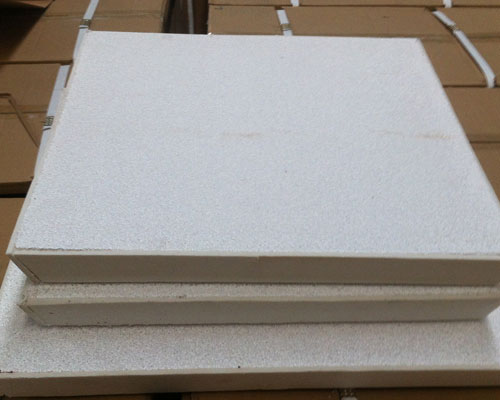Method for removing inclusions in molten aluminum: The ceramic foam filter can effectively remove the inclusions of the aluminum melt and significantly improve the quality of aluminum products.
Due to the oxygen affinity of aluminum, oxides are the most common among all aluminum alloy melt inclusions. The oxides in the aluminum melt have different types and shapes, and the density is 2.3-4g/cm”. These depend on the oxidation time, temperature and its thickness. Oxides are used in the pretreatment, smelting, refining, pouring and heat treatment processes As long as the aluminum melt is in contact with oxygen, oxide inclusions will be formed.
Oxidized inclusions exist in the castings in the form of blocks, flakes and granules. The nucleation and growth of oxide inclusions are affected by many factors, such as temperature, alloying elements and environmental humidity. Temperature is the most important influencing factor, and rising accelerates the oxidation of aluminum melt. Different alloying elements have different oxidation reaction rates, depending on their contribution to the density of the oxide layer and the level of oxygen affinity.
The ceramic foam filter can effectively remove the inclusions of the aluminum melt and significantly improve the quality of aluminum products. So as to greatly improve the production of aluminum products. Aluminum products play an important role in the daily life of residents. In the early production process of aluminum products, due to the imperfect technical methods, the electrolytic aluminum liquid contains a large amount of alumina residues, which seriously affects aluminum The quality of the product itself.
In the modern aluminum melting and casting industry, in the process of producing aluminum products, ceramic filter plates can effectively improve the alumina impurities in the aluminum liquid and increase the quality of aluminum products. The chemical composition of non-metallic inclusions formed in the melt Very stable, it is easy to cause cracks in castings after solidification.

The presence of non-metallic inclusions makes it difficult to predict the mechanical properties of castings. The influence of oxidized inclusions on the tensile properties of aluminum alloys is believed to be the main cause of the decrease in mechanical properties of aluminum alloys.
Stable and clean aluminum melt has many advantages.
It reduces the entrapment and solidification shrinkage during forming, and increases the compactness and strength of the blank.
Improve the uniformity of blank performance.
The forming resistance is reduced, the production efficiency is improved, and the rejection rate is reduced.
Reduce the filling temperature and extend the life of the mold.
The blanks of complex parts can be manufactured, and the production can be highly automated. This technology has been successfully applied to the manufacture of aircraft engine blade parts.
Whether from an economic point of view or from a process stability point of view, in metal forming, there are many methods to provide aluminum alloy blanks, such as mechanical stirring method, electromagnetic stirring method, strain activation method, powder method, etc.
However, the only high-stability and ultra-clean aluminum alloy metal blank production technology for commercial applications is electromagnetic stirring and strain activation. Electromagnetic separation is an efficient, stable and clean method for removing inclusions in aluminum melt. Among the various electromagnetic separation schemes, the alternating magnetic field scheme is most suitable for the removal of small inclusions.

